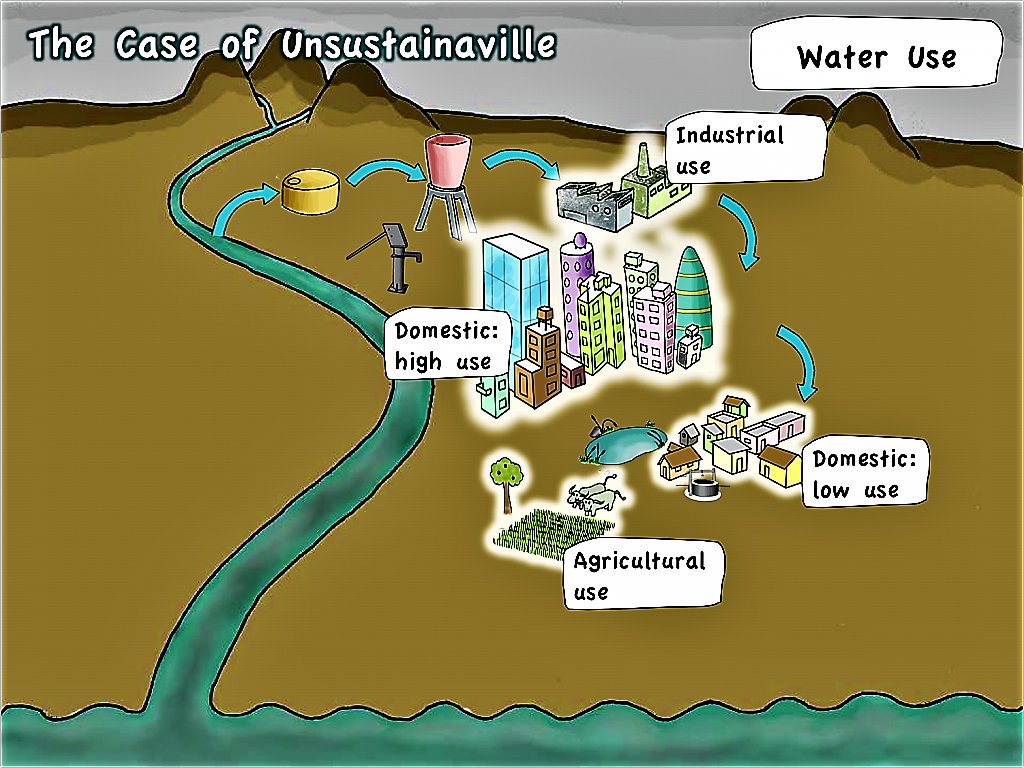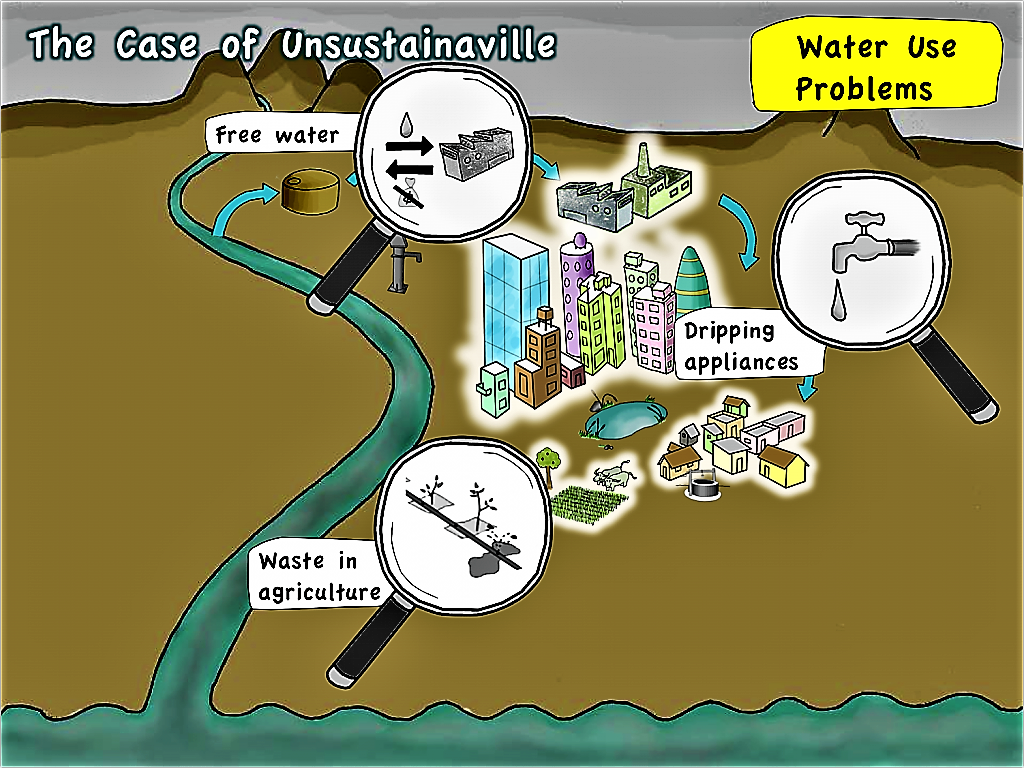Water Use
Now, add information on water use to your picture:
- Who are the main water users (e.g. households, agriculture, industry etc.)?
- For which purposes is water used in your area (consider also such as tourism, electricity generation, fishery, transport etc.)
- How much water is used? For what purpose?
Where to get further information: You may get information and statistical figures from the local statistical bureau, but also from the different stakeholders (industrial or agricultural associations) themselves.
Interlinkages: Which areas influence the consumption of water? And how does the consumption of water in agriculture, households and industry itself influence other areas of the water and nutrient loop. This is normally quite obvious: The way how water is used has a direct influence on the composition of wastewater, and again on the methods of treatment that are adequate.
The Case of Unsustainaville
Water Use in Unsustainaville

The primary water users in Unsustainaville are
- Industry
- Domestic uses (high use in the high-income areas, low use in the low-income areas due to missing connections)
- Agricultural use (high use, due to a lot of irrigation farming).
Problems with Water Use in Unsustainaville

At a closer look, the following problems with water use in Unsustainaville become apparent:
- Water is given to the industry for free. This was a political decision some years back, to attract further investors and create more jobs in the area. However, there is nowadays no incentive to safe and recycle water in industry, which is why a lot of water is wasted.
- The inhabitants of Unsustainaville are not aware of any water problems. Dripping appliances and a high water consumption increase the amount of water used and put an additional strain on the distribution grid.
- Lacking infrastructure and know-how in agriculture lead to a very high water consumption and causes further problems such as water logging.
Where do I find further information to tackle water use problems?
- See the water use section of the implementation tools
- To learn how you could start a change process, see planning and process tools
Previous and Next Step
Go back to previous step -----> How is Water Distributed?
Go to next step -----> How is Wastewater Collected?
